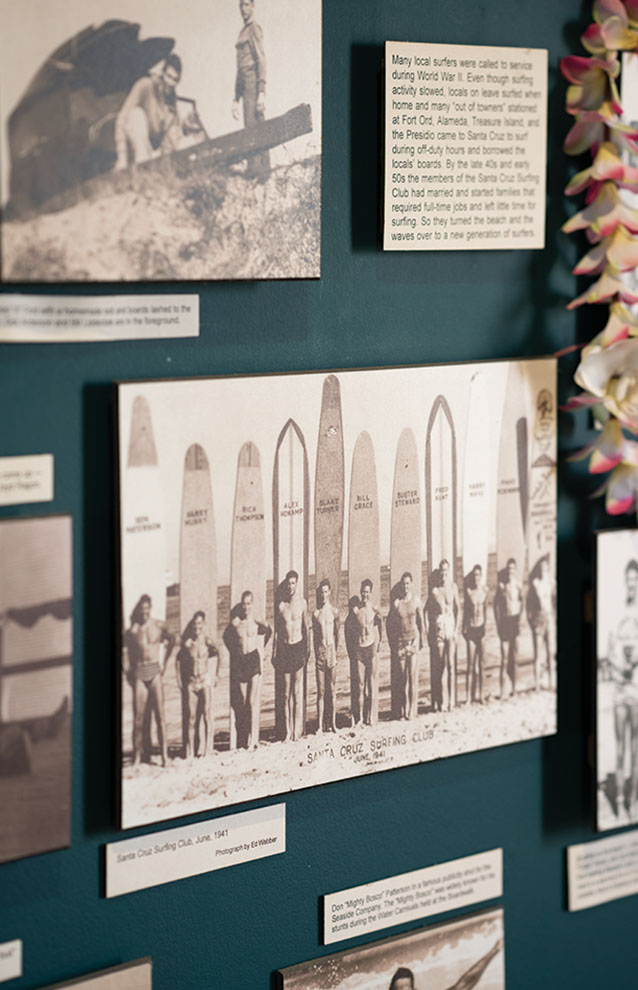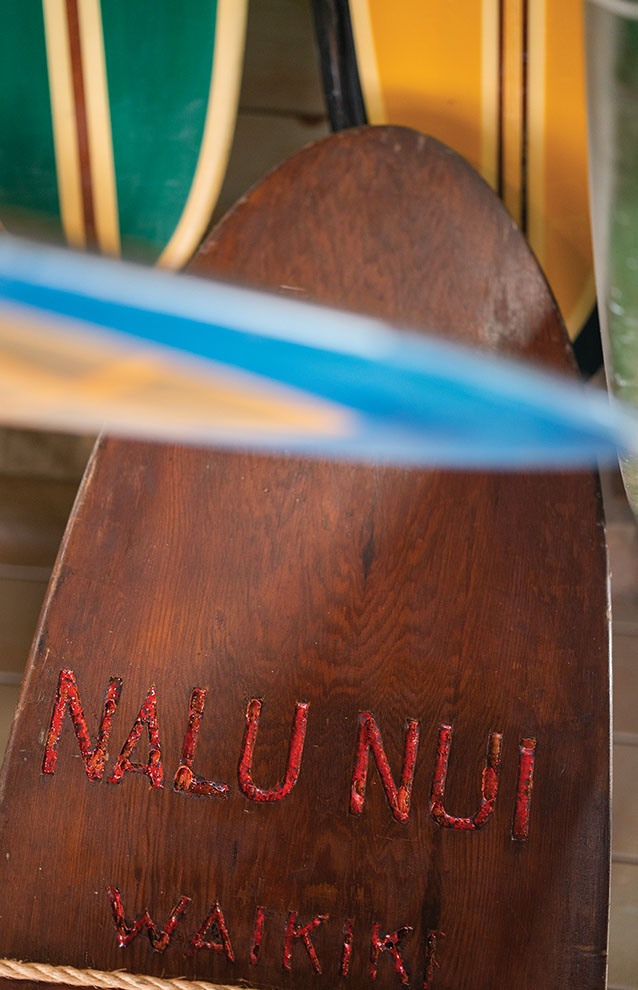In July 1885, spectators gathered at the mouth of the San Lorenzo River in Santa Cruz, California, to watch three young Hawaiians paddle into the surf on olo, longboards shaped from local redwood. Queen Kapiolani’s nephews, Princes Jonah Kūhiō Kalanianaʻole, Edward Abnel Keliiahonui and David Laʻamea Kawānanakoa, were attending St. Matthew’s Military School in San Mateo and summering in Santa Cruz. An article in a local paper later that week contains the first documented account of surfing in North America: “The young Hawaiian princes were in the water, enjoying it hugely, and giving interesting exhibitions of surf-board swimming as practiced in their native islands.” The demonstration captivated the crowd, and exactly a hundred years later, a group of local surfers banded together to preserve the sport’s history in their hometown.
“Since that moment in 1885, surfing has been an integral part of life in Santa Cruz,” says Kim Stoner, a local surfer and historian. “Around it has formed a close-knit community of generations of surfers and their families.” Stoner is a founding member of the Santa Cruz Surfing Museum (SCSM), a small but picturesque museum in the Mark Abbott Memorial Lighthouse on a bluff above the famous surf break named Steamer Lane.
 |
 |
Above left, museum founder Kim Stoner with Fred Hunt’s 1940s-era wood board. Right, the Santa Cruz Surfing Club in 1941. Facing page, a historic wood board from Hawaii
In 1985, members of the Santa Cruz Surfing Club, the Santa Cruz Longboard Union, the Westside Longboard Coalition and the local Surfrider Foundation chapter joined together to source every museum-worthy artifact, photograph, document and firsthand story they could. What resulted is SCSM’s permanent exhibit, and on May 24, 1986, the Santa Cruz Surfing Museum was opened with the ceremonial cutting of a surf leash. At the time it was the first museum in the world dedicated entirely to surfing.
Visitors are taken through a timeline of photos, surfboard innovations and memorable moments. “We have the only surviving board from the 1936 Santa Cruz Surfing Club,” says Stoner, “as well as an original balsa board shaped in 1952, and Jay Moriarity’s board from Chasing Mavericks.” What the museum lacks in size (the exhibit space is less than five hundred square feet) it makes up for in heart: Stories from generations of local surfers make it feel more like a shrine than a museum. Donations and gift shop revenue ensure that SCSM remains free and open to the public five days a week.
In 2010, Princess Esther Kapiʻolani Kawānanakoa Marignoli, granddaughter of Prince David, assisted the Santa Cruz Surfing Club Preservation Society in creating a monument to the three princes. It sits outside SCSM, overlooking the bay the royal brothers surfed for the first time nearly 140 years ago.
santacruzsurfingmuseum.orgOpens external link to page that may not meet accessibility guidelines


